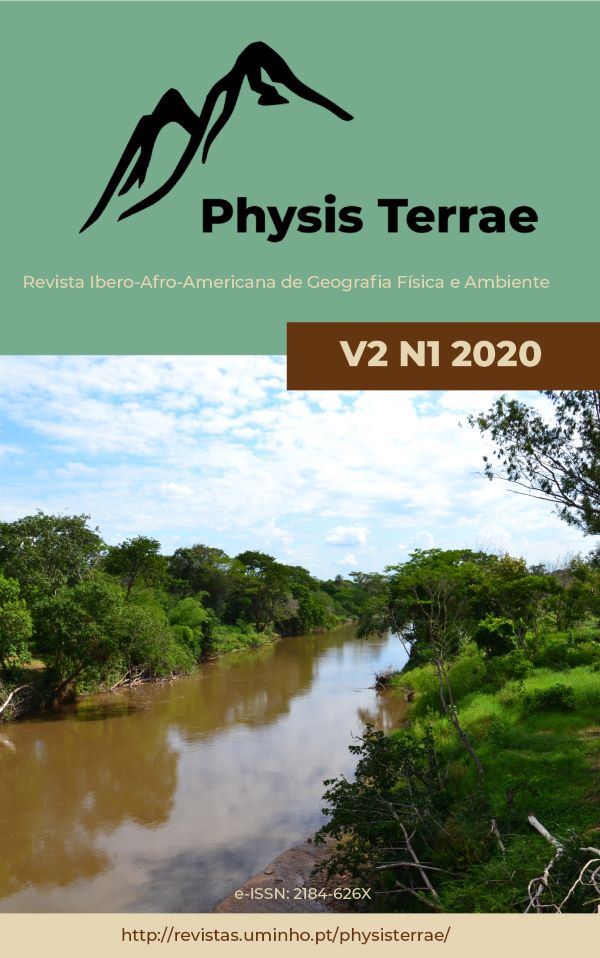On the trails of Vila Velha State Park (Paraná-Brasil): between landscape shapes and lines
DOI:
https://doi.org/10.21814/physisterrae.2247Keywords:
Geomorphology, Environmental education, Teaching, Environment, Geography, InterdisciplinarityAbstract
This research discusses the pedagogical potential of geomorphological patrimony as space for citizenship generation, due to its constitution as a reachable local to build and spread knowledge through different educational stages. In this sense, as a way to enjoy such formative potentialities of geomorphological patrimonies, a study in loco was proposed by means of a interdisciplinary practice between Geography ad Arts, taking place in the Vila Velha State Park, city of Ponta Grossa, Paraná, Brazil. The objective was to deepen the knowing on landscape shapes and Earth’s geological structure, as well as to stimulate the artistic and creative potential of sixth grade students from a Londrina/Paraná middle school through videos and pictures. Vila Velha State Park is constantly visited for this purpose, since it is a geological site recognized as Historical and Artistic State Patrimony since 1966. The field research allowed students to experience a peculiar landscape and comprehend the land dynamics and the transformations provoked by different agents. As result, it was found that Vila Velha State Park, has considerable potential to be used as site for developing educational activities. The field research provided a perception of current environmental and sensitizing subjects towards environmental thematic. As conclusion, field researches to geoconservation sites offered to schools bring lifetime learning to the students, duo to their direct experience with the visited places.
Downloads
References
Antonello, I. T., Moura, J. D., Torres, E. C. (2005). Uma proposta para a formação de professores de geografia: trabalho de campo integrado. Revista Geografia. v.30, n.3.
Callai, H. C., Zarth, P. A. (1988). O estudo do municipio e o ensino de historia e geografia. UNIJUI.
Machado, A. L. (2019.) Movimento de retorno a natureza. Consultado em outubro 8, 2018, em: https://ciclovivo.com.br/vida-sustentavel/equilibrio/movimento-natureza-projeto-educacional/
Melo, M. S. D., Godoy, L. C., Meneguzzo, P. M., Silva, D. J. P. D. (2004). A geologia no plano de manejo do Parque Estadual de Vila Velha, PR.
Mineropar Minerais do Paraná S.A. (2019). Parque Estadual de Vila Velha. Consultado em maio 6,2019, em: http://www.mineropar.pr.gov.br/modules/conteudo/conteudo.php?conteudo=14
Prefeitura Municipal de Ponta Grossa (2019). Parque Estadual de Vila Velha. Consultado em maio 2,2019 em: http://www.pontagrossa.pr.gov.br/parque-estadual-vila-velha.
Resende, Márcia M. S. (1989). O saber do aluno e o ensino de geografia. In: Vesentini, J. W.(org) et. al. Geografia e Ensino: textos críticos. 5ª edição Campinas: Papirus.
Santos, H. G. dos; Zaroni, M. J; Almeida, E. P. C. (2019). Neossolos Litólicos. Agência Embrapa de Informação Tecnológica. Consultado em julho 29, 2019, em https://www.agencia.cnptia.embrapa.br/gestor/solos_tropicais/arvore/CONT000gn230xho02wx5ok0liq1mqxhk6vk7.html


